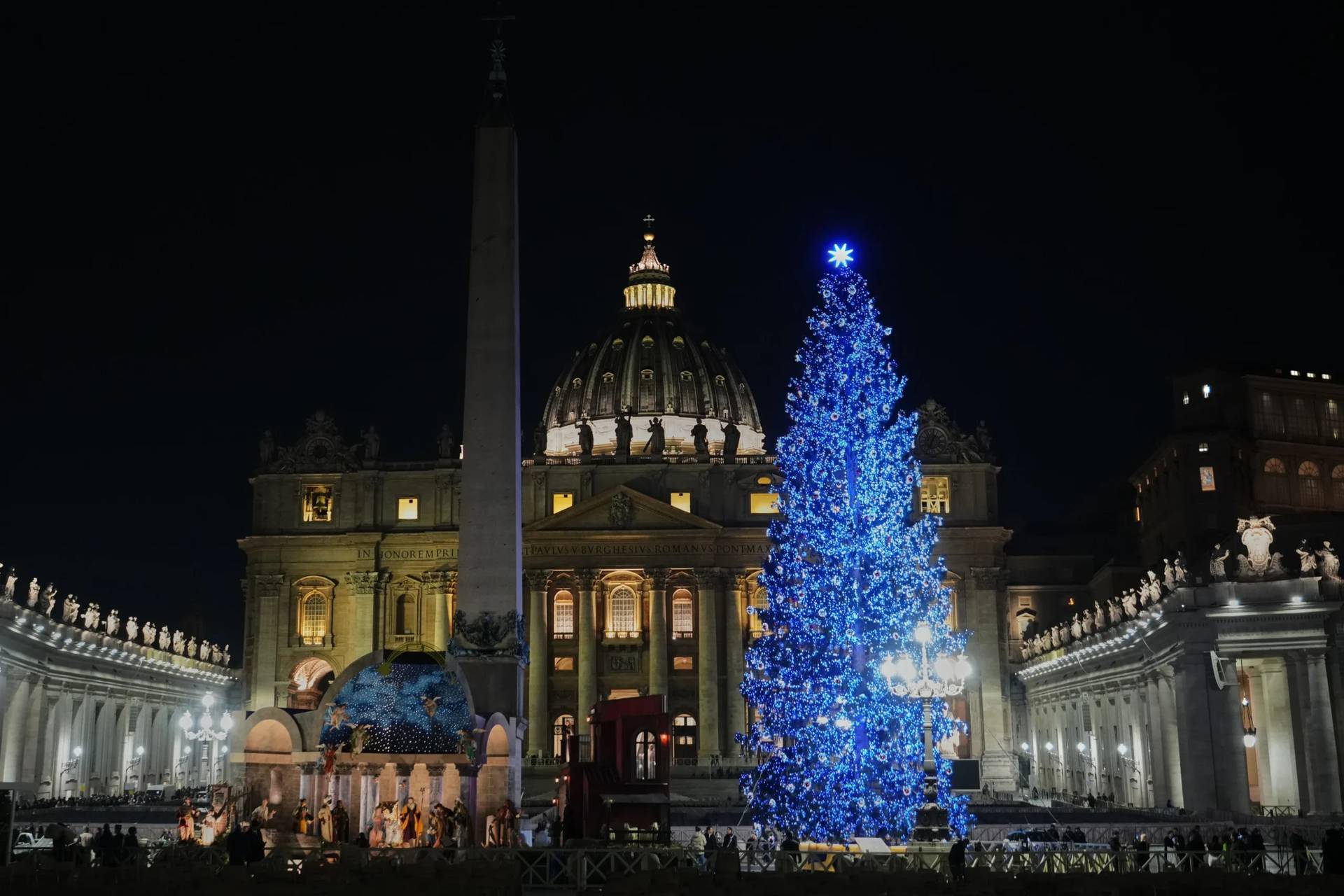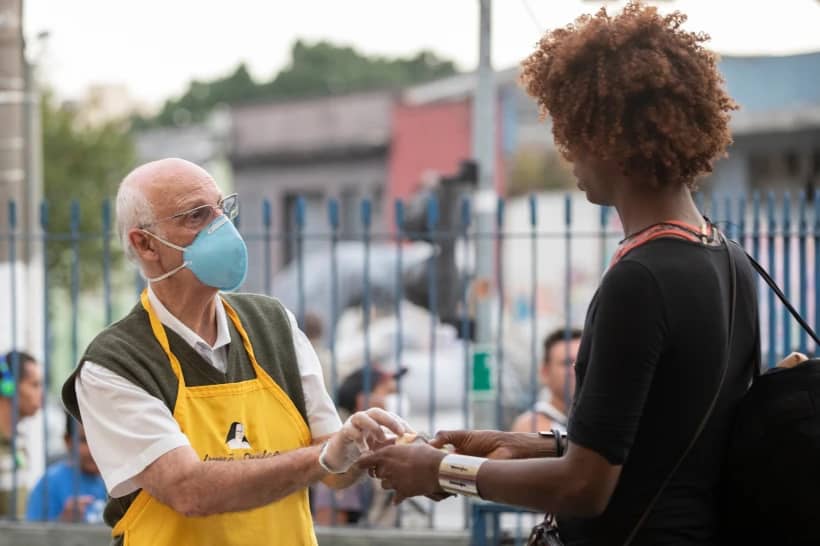[Editor’s note: Crux is publishing an occasional series of brief profiles in the ongoing drama surrounding clerical sexual abuse, ex-Cardinal Theodore McCarrick, and accusations of cover-up against various Church officials including Pope Francis.]
Cardinal Giovanni Battista Re, a longtime veteran in Vatican diplomacy and service within the Roman Curia, has emerged as yet another key figure in the ongoing saga of scandals surrounding ex-Cardinal Theodore McCarrick.
According to Archbishop Carlo Maria Viganò, a former Vatican ambassador to the United States who published an 11-page letter Aug. 25 detailing a behind-the-scenes account of McCarrick’s rise to power and allegations that several high-ranking prelates, including Pope Francis, covered-up for him, Re was someone opposed to McCarrick from the beginning.
[When Crux contacted Re’s residence, the person answering the phone hung up when told a journalist was calling. Several subsequent calls went unanswered.]
Not only did Re, a long-time curial insider, voice disapproval for McCarrick’s appointment as Archbishop of Washington in 2000, but, according to Viganò, he allegedly also knew about sanctions imposed against the American prelate, and communicated those to certain curial officials, including Viganò himself.
A Career in the Roma Curia
Re, 84, has spent the better part of his life and career among the ranks of the Roman Curia, working for nearly 25 years in Rome since his 1987 appointment as secretary of the Vatican’s Congregation for Bishops, until his retirement as the body’s prefect in 2010.
Born in Borno, Italy in 1934, Re was ordained a priest for the Italian diocese of Brescia in 1957 and holds a degree in canon law from the Pontifical Gregorian University in Rome.
He taught at the Brescia seminary before his appointment in 1964 as the personal secretary of the late Archbishop Giovanni Benelli, who also had a lengthy career in diplomatic service, including important posts in the Roman Curia.
After serving in a number of other diplomatic positions in countries such as Panama and Iran, in 1987 Re was named secretary of the Vatican’s Congregation for Bishops, and given the title of Titular Archbishop of Forum Novum. He held the role for two years before being named the Sostituto, or “Substitute” for General Affairs of the Vatican’s Secretariat of State, making him a top papal aide.
Re held the position as Sostituto for 11 years, until in 2000 he was appointed as Prefect of the Congregation for Bishops and President of the Pontifical Commission for Latin America by St. John Paul II, who gave him a red hat less than a year later.
His appointment to the bishops’ department, also called a dicastery, in 2000 is significant, as it was the same year that the McCarrick whistleblower first sent a letter to the Vatican’s embassy in Washington D.C. complaining about McCarrick’s conduct with seminarians.
RELATED: McCarrick whistleblower calls for laicization, investigation
Re was named as head of the Vatican bishops’ office in September 2000, and Father Boniface Ramsey sent his letter in November, within days of the announcement that McCarrick had been named Archbishop of Washington.
According to Viganò’s bombshell letter, the Vatican’s ambassador to the United States at the time, Colombian Archbishop Gabriel Montalvo, had urged Ramsey to send the letter and then immediately passed it on to Rome, meaning that within months of taking office, Re allegedly would have had the first formal McCarrick complaint on his desk.
RELATED: Colombian prelate opened door to first McCarrick complaint
Viganò asserts that Montalvo’s action was followed up on by his predecessor, Pietro Sambi, who allegedly wrote to Rome about further complaints against McCarrick and sent documents from a former priest who said he had been abused by the prelate. This would also have been during Re’s tenure in the Vatican office for bishops.
RELATED: Sambi, a veteran papal diplomat, allegedly told Rome about McCarrick
Though he retired in 2010, Re continues to make rounds in the Curia, currently serving as Vice-Dean of the College of Cardinals, having been named to the post in 2017.
Opposing McCarrick
In his letter Viganò said Re had been opposed to McCarrick’s appointment as archbishop of Washington from the beginning, even before Ramsey’s complaint was made, saying there is a note inside the Vatican embassy in Washington “written in his hand,” in which Re “disassociates himself from the appointment and states that McCarrick was 14th on the list for Washington.”
Yet despite Re’s opposition, McCarrick’s appointment went through. He did not retire until 2006, meaning Re oversaw the Vatican’s office for bishops during the prelate’s entire tenure as archbishop of Washington.
Around the time of McCarrick’s retirement, more complaints began to pour in, one of which, according to Viganò, came in the form of an “Indictment Memorandum” by Gregory Littleton, a former priest laicized for abusing minors, and who in the documents recounted his own abuse by McCarrick and that of several other priests and seminarians.
Viganò, who was working in the Vatican’s curial offices at the time, alleges that he sent the information to his superiors, and they did nothing.
When in April 2008 an open letter to Benedict XVI on the pattern of clerical abuse in the U.S. was published online by Richard Sipe, a former Benedictine priest who was a noted expert on the phenomenon of clerical sexual abuse and its roots, Viganò said the letter was passed on to both then-Prefect of the Congregation of the Doctrine of the Faith, Cardinal William Levada, and then-Secretary of State, Cardinal Tarcisio Bertone.
In his letter, Sipe claimed that the abuse crisis in the U.S. was a systemic problem, and to drive the point home, he cited examples from both the Archdiocese of Washington, and from St. John’s Abbey in Collegeville, Minnesota.
Sipe also cited reports from several seminarians at St. Mary’s Pontifical Seminary in Baltimore, who had raised concerns about McCarrick’s misconduct while he was Bishop of Metuchen, from 1981-1986, and while he was Archbishop of Newark, from 1986-2000.
When Sipe’s letter got to him roughly a month after its publication, Viganò said he immediately sent a note to his superiors about it asking them to intervene and to impose sanctions on McCarrick, however, his memo was never answered.
He said he finally “learned with certainty” that Sipe’s letter had reached Benedict with a successful result when Re informed him that the pontiff had imposed sanctions against McCarrick.
These sanctions, he said, were that “the Cardinal was to leave the seminary where he was living, he was forbidden to celebrate [Mass] in public, to participate in public meetings, to give lectures, to travel, with the obligation of dedicating himself to a life of prayer and penance.”
Re, who allegedly informed Viganò about the sanctions, would have likely played a key role in compiling the “thick” McCarrick dossier that Viganò says sits in the archives of the Congregation for Bishops, and he allegedly also informed his predecessor, Canadian Cardinal Marc Ouellet, about the situation surrounding McCarrick, including the sanctions and the dossier.













